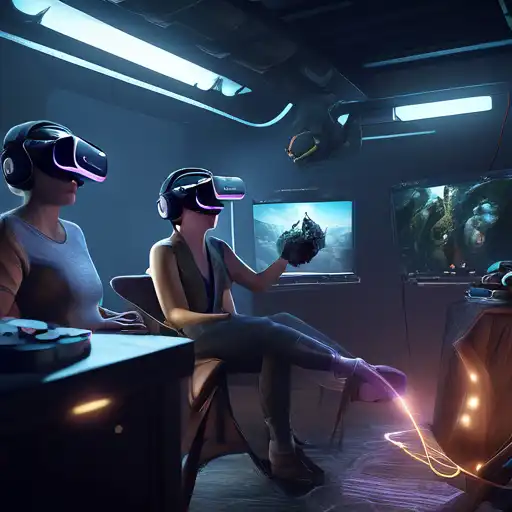Introduction to Virtual Reality
Virtual Reality (VR) has transformed the way we interact with digital content, offering immersive experiences that were once the stuff of science fiction. This guide delves into the essentials of creating captivating VR experiences, from conceptualization to execution.
Understanding VR Technology
Before diving into VR creation, it's crucial to understand the technology behind it. VR relies on headsets and sensors to transport users into a fully digital environment, creating a sense of presence in a virtual world.
Key Components of VR Experiences
- Hardware: The choice of VR headset (e.g., Oculus Rift, HTC Vive) significantly impacts the user experience.
- Software: Development platforms like Unity and Unreal Engine are pivotal for building VR applications.
- Content: Engaging and interactive content is the heart of any VR experience.
- User Interaction: Designing intuitive controls and interactions enhances immersion.
Designing for Immersion
Creating an immersive VR experience requires careful consideration of design principles. Attention to detail, realistic environments, and responsive interactions are key to keeping users engaged.
Best Practices in VR Design
- Prioritize user comfort to prevent motion sickness.
- Ensure environments are rich and interactive to foster exploration.
- Use spatial audio to enhance the sense of presence.
- Optimize performance to maintain smooth frame rates.
Developing VR Content
With the right tools and knowledge, developers can bring their VR visions to life. Whether for gaming, education, or training, the possibilities are endless.
Choosing the Right Development Tools
Selecting the appropriate software is critical. Unity offers versatility and a vast asset store, while Unreal Engine provides high-fidelity graphics. Both support VR development with extensive documentation and community support.
Testing and Iteration
Testing is an ongoing process in VR development. Gathering user feedback and making adjustments ensures the final product is both immersive and user-friendly.
Future of VR
As technology advances, VR experiences will become even more realistic and accessible. Innovations in haptic feedback and AI are set to redefine the boundaries of virtual immersion.
For those interested in exploring more about VR technology, check out our latest article on VR trends.
Conclusion
Creating immersive VR experiences is a complex but rewarding endeavor. By understanding the technology, adhering to design best practices, and leveraging the right development tools, anyone can craft unforgettable virtual worlds.
